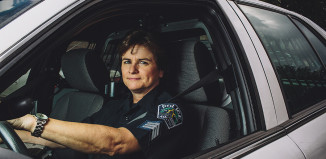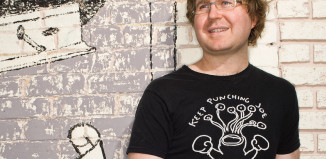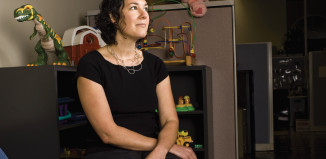Ali Forney was a homeless African-American gay and transgender youth living on the streets of New York City in the 1990s when Carl Siciliano, who ran a drop-in center for homeless youth in Times Square, met him. When Forney was murdered a few years later at the age of 22, Siciliano felt called to action. Statistically, 20 percent of homeless youth in America are LGBT. Even more frightening, LGBT youth are at a higher risk for victimization, mental health problems and unsafe sexual practices. The Ali Forney Center, founded by Siciliano in 2002, serves LGBT youth ages 16 to 24 in New York City, giving them safe shelter, counseling, basic amenities, medical referrals, HIV testing, and life skills programming. Siciliano spoke with me by phone about the Center’s challenges, long- term goals and his own history of activism.
Tell me about your personal connection to the Ali Forney Center.
My personal connection was that I knew Ali Forney (pronounced “For- NAY”) very well. I ran a drop-in center for homeless kids in Times Square. I met him there when he was 19 and he’d been on the streets since he was 13. He was murdered back in the 1990s. It was heartbreaking. Since he was the one I knew the best, it really made me aware of how desperate a need there was for safe housing for homeless gay kids.
What was the biggest challenge in launching it?
The biggest hurdle was a lack of awareness within the LGBT community that this was a serious crisis. There was very little awareness that so many of our kids were being thrown out of their homes into the streets. They’re ashamed, so they don’t go around carrying signs saying “homeless gay kid.” There wasn’t a lot of financial support from foundations or donors; you needed the consciousness of the commu- nity to be changed in order for that to happen.
If you could wave your magic wand, what would you want for the group in the coming years?
Right now, we have 77 beds and we turn away about 200 kids every night. If I could wave a magic wand, we’d have enough beds to house all these kids. We have a drop-in center that’s only open five days a week, eight hours a day. We want it open 24 hours (a day), so we’re looking for a new space. My longer- term goal is to have housing for them (kids who ride the trains all night), but in the short term, I’d rather have temporary shelter for them. We have the scattered-site model of apartments. The U.S. Department of Housing & Urban Development funds those, and they only give us half of what the rent costs, so we’re losing money. We want to start to buy build- ings, which will give us more long-term stability. First will be the Bea Arthur residence. One of her last public performances was a benefit for us. She left us $300,000 in her will. We are in negotiations to take over a city-owned building. Fundamentally, there’s so many more kids needing housing.
You just returned from a big conference in Detroit. What was that experience like?
The White House did a conference on LGBT housing and homelessness. I was a panelist there. It was mind-blowing. It was a demonstration to me of how things have changed. There are still tons of kids get- ting thrown out of their homes and not enough beds for them. But there’s no way to fix a disaster if you don’t acknowledge it first. That’s what Detroit was: the government acknowledging that 40 percent of the homeless in this country are LGBT youth.
What events in your life sparked your own activism?
My parents got divorced when I was a little child, so my mother kind of vanished. It makes you feel unloved and abandoned. I think that having had that experience, it naturally creates empathy for me. When I was a teenager, I was very religious. I was a monk in a monastery for a while, and I was part of a group called the Catholic Worker Movement. I’m not invested in Catholicism anymore. My spiritual values are still pretty strong. It feels important to me to struggle for a more just world.



































